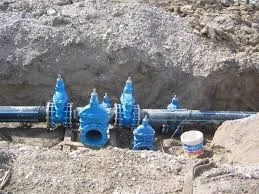Dec . 13, 2024 06:34 Back to list
Exploring the Benefits and Applications of PPR Tube in Modern Plumbing Systems
Understanding PPR Tubes Benefits, Applications, and Considerations
PPR (Polypropylene Random Copolymer) tubes have gained significant popularity in recent years, especially within the plumbing and construction industries. As a reliable and durable option, PPR tubes are often chosen for various applications due to their unique properties and advantages over traditional materials. This article delves into the characteristics, benefits, applications, and considerations surrounding PPR tubes.
What are PPR Tubes?
PPR tubes are made from a type of polypropylene that is known for its random copolymer structure. This design contributes to the material’s flexibility, strength, and resistance to temperature variations. PPR tubes are available in various sizes and dimensions, catering to a wide range of needs in plumbing, heating, and fluid transportation applications.
Benefits of PPR Tubes
1. Durability One of the primary advantages of PPR tubes is their exceptional durability. They can withstand high pressure and temperature fluctuations, making them suitable for hot and cold water applications. This durability ensures a long lifespan and reduces the frequency of replacements.
2. Corrosion Resistance Unlike metal pipes that can corrode over time, PPR tubes are resistant to corrosion and chemical damage. This feature makes them ideal for transporting potable water, chemicals, and other fluids, ensuring safe and reliable usage.
3. Lightweight PPR tubes are significantly lighter than their metal counterparts, making them easier to handle and transport. This lightweight nature also simplifies the installation process, lowering labor costs and reducing the overall time required for plumbing projects.
4. Easy Installation The installation of PPR tubes is relatively straightforward. They can be joined using heat fusion methods, which create strong and leak-proof connections. This ease of installation makes PPR tubes an attractive option for both professionals and DIY enthusiasts.
5. Thermal Insulation PPR tubes offer excellent thermal insulation properties, which helps to maintain the temperature of the fluid being transported. This can be particularly beneficial for hot water systems, where energy loss needs to be minimized.
6. Eco-Friendly PPR materials are recyclable, contributing to environmental sustainability. The production processes for PPR tubes also tend to have a lower environmental impact compared to those for metal pipes.
Applications of PPR Tubes
ppr tube

PPR tubes are widely used across various sectors due to their extensive range of benefits
- Plumbing Systems PPR tubes are commonly employed in residential, commercial, and industrial plumbing systems for both cold and hot water distribution.
- Heating Systems They are popular in heating applications, including underfloor heating and radiator systems, where their resistance to high temperatures is particularly advantageous.
- Industrial Applications PPR tubes are used extensively in industrial settings for transporting chemicals and fluids due to their resistance to corrosion and chemical damage.
- Agricultural Use In agriculture, PPR pipes are utilized for irrigation systems, providing efficient water distribution networks that can withstand environmental stresses.
Considerations When Choosing PPR Tubes
While PPR tubes offer numerous advantages, there are certain considerations to keep in mind
1. Compatibility with Other Materials When integrating PPR tubes with other materials, compatibility must be evaluated. Transition fittings may be required to connect PPR tubes with existing metal or PVC piping.
2. Temperature Limitations Although PPR tubes can withstand high temperatures, there are limits. It’s essential to consult manufacturer specifications to ensure that the selected PPR tubing meets the temperature requirements for specific applications.
3. Expansion and Contraction Due to thermal expansion, PPR tubes may expand or contract with temperature fluctuations. Proper installation techniques, including the use of expansion fittings, are necessary to accommodate these movements.
Conclusion
In summary, PPR tubes represent a modern solution for plumbing and fluid transportation needs, offering a host of benefits including durability, corrosion resistance, and ease of installation. Their application across various sectors highlights their versatility. While there are considerations to bear in mind, selecting PPR tubes can lead to efficient, reliable, and long-lasting systems. As the demand for sustainable and eco-friendly materials continues to rise, PPR tubes are poised to remain a favored choice in the construction and plumbing industries.
-
High-Quality PPR Pipes and Fittings Durable ERA PPR & PVC PPR Solutions
NewsJul.08,2025
-
Black HDPE Cutting Board - Durable, Non-Porous & Food Safe HDPE Plastic Cutting Board
NewsJul.08,2025
-
High-Quality CPVC Panel Durable HDPE & PVC Panels Supplier
NewsJul.08,2025
-
Double PE Welding Rod Supplier - High Strength, Durable & Versatile Welding Solutions
NewsJul.07,2025
-
High-Quality PVC-O Pipe Supplier Durable 75mm PVC Pipe & Connections Leading PVC Pipe Company
NewsJul.07,2025
-
HDPE Drainage Pipe Supplier – Durable & Corrosion-Resistant Solutions
NewsJul.06,2025

